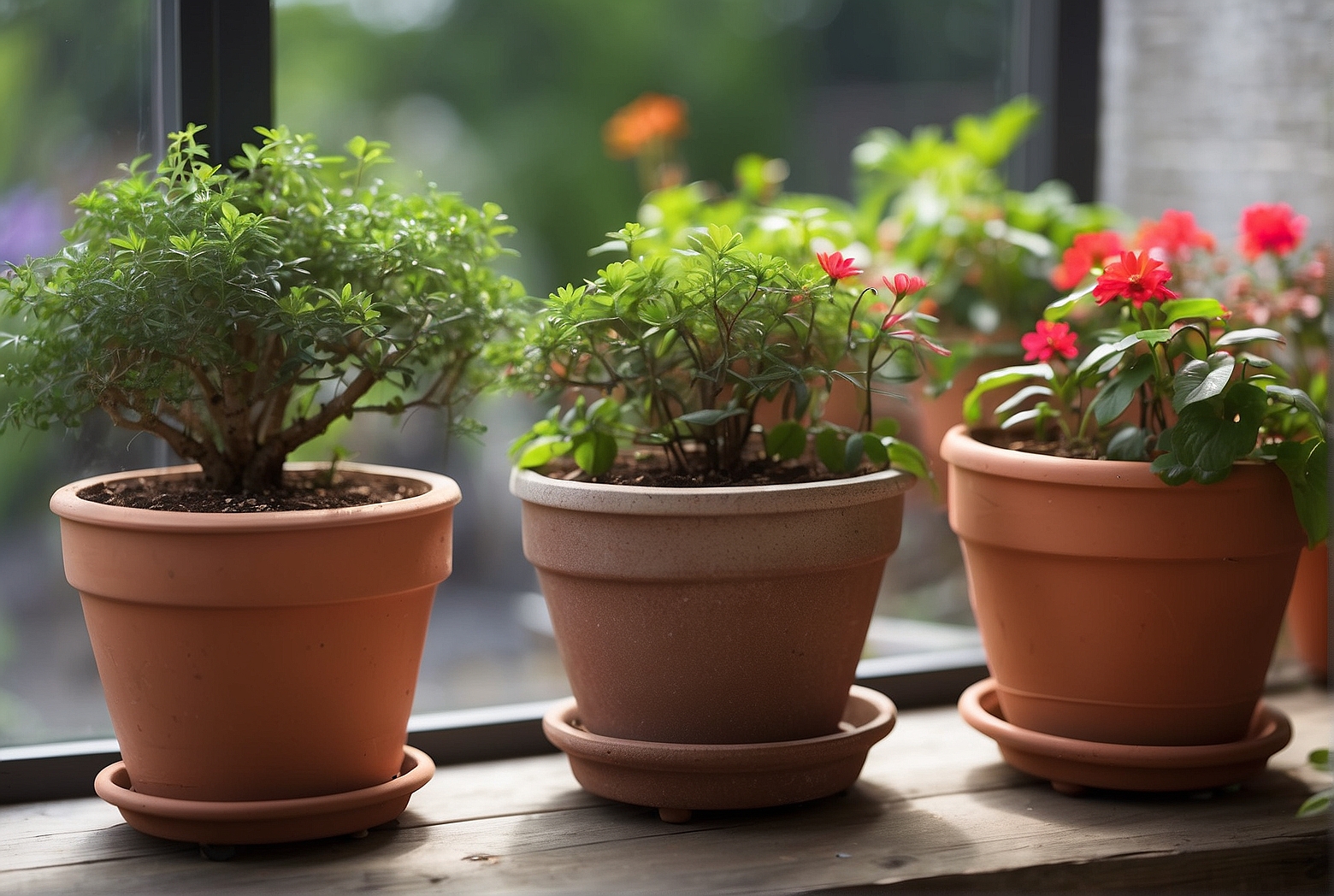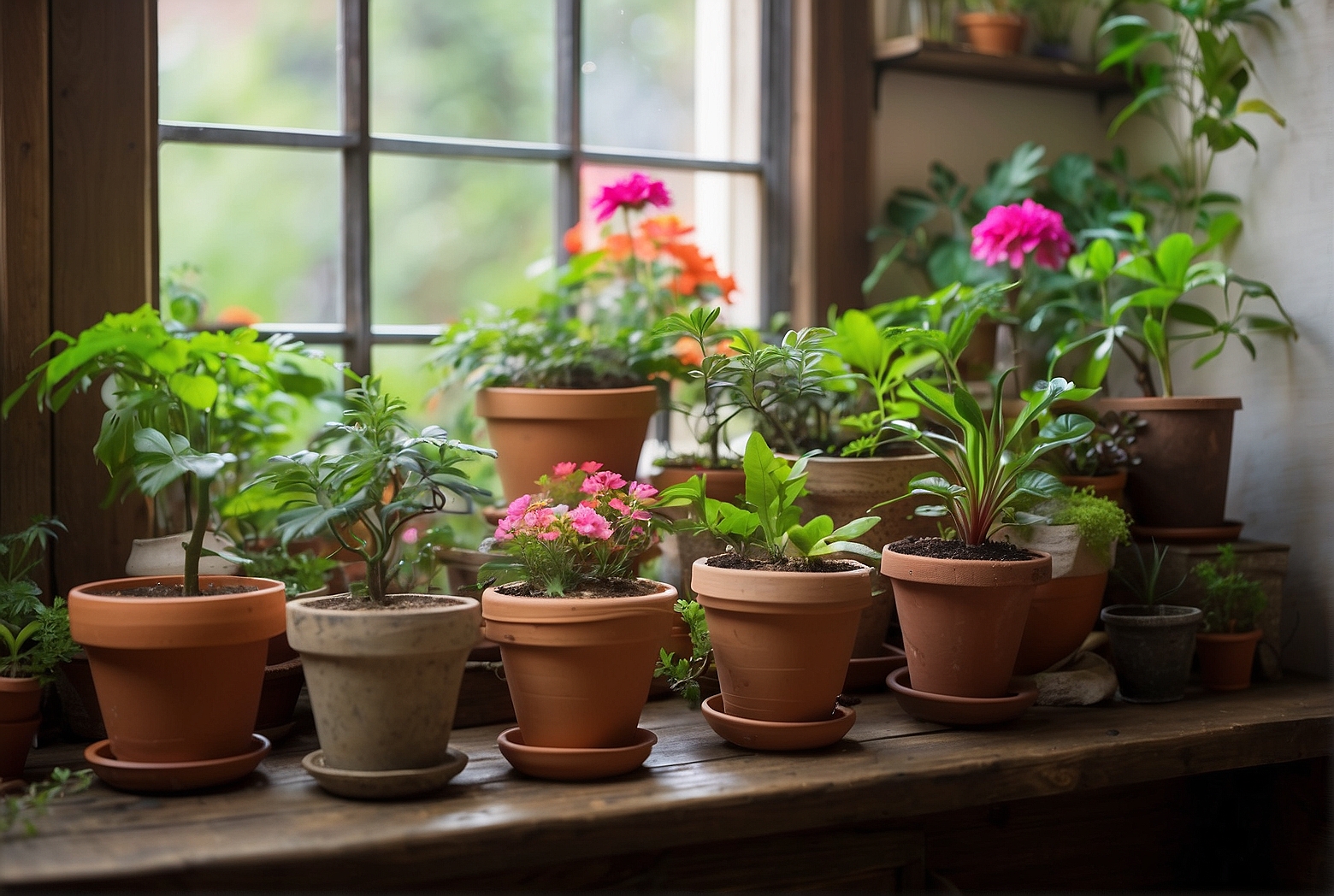Bringing potted plants indoors can be a great way to add a touch of nature to your home. However, it is important to know when the right time is to bring your plants indoors. Depending on the type of plant, the time of year, and the climate you live in, the best time to bring your plants indoors can vary. Knowing when to bring your plants indoors can help ensure that they stay healthy and thrive in their new environment.
How to Know When It’s Time to Bring Your Potted Plants Indoors
As the weather begins to cool, it is important to know when it is time to bring your potted plants indoors. This is especially true for plants that are sensitive to cold temperatures. Knowing when to bring your plants indoors can help ensure that they remain healthy and vibrant throughout the winter months.
The first step in determining when to bring your potted plants indoors is to check the temperature. If the temperature is consistently below 50 degrees Fahrenheit, it is time to bring your plants indoors. Additionally, if the temperature is expected to drop below freezing, it is important to bring your plants indoors as soon as possible.
Another factor to consider is the amount of sunlight your plants are receiving. If the days are becoming shorter and the sunlight is becoming less intense, it is time to bring your plants indoors. This is especially true for plants that require a lot of sunlight, such as succulents.
Finally, it is important to check the soil of your potted plants. If the soil is dry and cracked, it is time to bring your plants indoors. Additionally, if the soil is becoming waterlogged, it is important to bring your plants indoors to prevent root rot.
By following these steps, you can ensure that your potted plants remain healthy and vibrant throughout the winter months. Knowing when to bring your plants indoors can help ensure that they remain healthy and vibrant for years to come.
Tips for Transitioning Potted Plants from Outdoor to Indoor Living
1. Choose the Right Plants: When transitioning potted plants from outdoor to indoor living, it is important to choose plants that are suitable for indoor conditions. Consider the amount of light, temperature, and humidity that the plant will need to thrive indoors.
2. Acclimate the Plant: Gradually introduce the plant to its new environment by placing it in a shady spot outdoors for a few days before bringing it indoors. This will help the plant adjust to the lower light levels and temperature changes.
3. Check for Pests: Before bringing the plant indoors, inspect it for any pests or diseases that may have been picked up outdoors. If any pests are found, treat the plant with an appropriate insecticide or fungicide.
4. Repot the Plant: If the plant has outgrown its pot, it may need to be repotted in a larger container. Choose a pot that is slightly larger than the current one and use a potting mix that is suitable for indoor plants.
5. Provide Adequate Light: Most indoor plants require bright, indirect light to thrive. Place the plant near a window that receives plenty of sunlight, or use a grow light to supplement the natural light.
6. Monitor Watering: Indoor plants typically require less water than outdoor plants, so it is important to monitor the soil moisture levels and adjust the watering schedule accordingly.
7. Prune as Needed: Pruning is an important part of keeping indoor plants healthy. Remove any dead or damaged leaves and stems, and trim back any overgrown branches.
By following these tips, you can ensure that your potted plants make a successful transition from outdoor to indoor living.
The Benefits of Bringing Potted Plants Indoors Before the First Frost
Bringing potted plants indoors before the first frost is a great way to protect them from the cold weather and ensure they will survive the winter. There are many benefits to doing this, including extending the life of the plants, protecting them from extreme temperatures, and providing a more aesthetically pleasing environment.
Extending the Life of the Plants
One of the main benefits of bringing potted plants indoors before the first frost is that it can extend the life of the plants. Frost can damage the leaves and stems of plants, making them more susceptible to disease and pests. By bringing them indoors, you can protect them from the cold and ensure they will survive the winter.
Protecting from Extreme Temperatures
Another benefit of bringing potted plants indoors before the first frost is that it can protect them from extreme temperatures. Frost can cause the soil to freeze, which can damage the roots of the plants and make them more susceptible to disease. By bringing them indoors, you can protect them from the cold and ensure they will survive the winter.
Providing a More Aesthetically Pleasing Environment
Finally, bringing potted plants indoors before the first frost can provide a more aesthetically pleasing environment. Plants can add a touch of beauty and color to any room, and by bringing them indoors, you can enjoy their beauty all winter long.
In conclusion, bringing potted plants indoors before the first frost is a great way to protect them from the cold weather and ensure they will survive the winter. There are many benefits to doing this, including extending the life of the plants, protecting them from extreme temperatures, and providing a more aesthetically pleasing environment.

Q&A
1. when should i bring potted plants indoors?
It is best to bring potted plants indoors before the first frost of the season. This will help protect them from the cold temperatures and ensure they are healthy and thriving. Additionally, it is important to check the soil moisture levels of the plants before bringing them indoors to make sure they are not too dry.
2. How do I prepare my potted plants for indoor living?
Before bringing your potted plants indoors, it is important to inspect them for any pests or diseases. If any are found, it is best to treat them before bringing them indoors. Additionally, it is important to prune the plants to remove any dead or damaged leaves and stems. Finally, it is important to check the soil moisture levels and adjust the watering schedule accordingly.
3. What should I do if my potted plants are not thriving indoors?
If your potted plants are not thriving indoors, it is important to check the light levels, temperature, and humidity of the environment. Additionally, it is important to check the soil moisture levels and adjust the watering schedule accordingly. If the plants are still not thriving, it may be necessary to repot them in fresh soil or move them to a different location with more suitable conditions.
Conclusion
In conclusion, when deciding when to bring potted plants indoors, it is important to consider the temperature, light, and humidity levels of the environment. If the temperature is too cold, the light is too low, or the humidity is too high, it is best to bring the plants indoors. Additionally, it is important to check for pests and diseases before bringing the plants indoors. By following these guidelines, you can ensure that your potted plants will thrive indoors.

